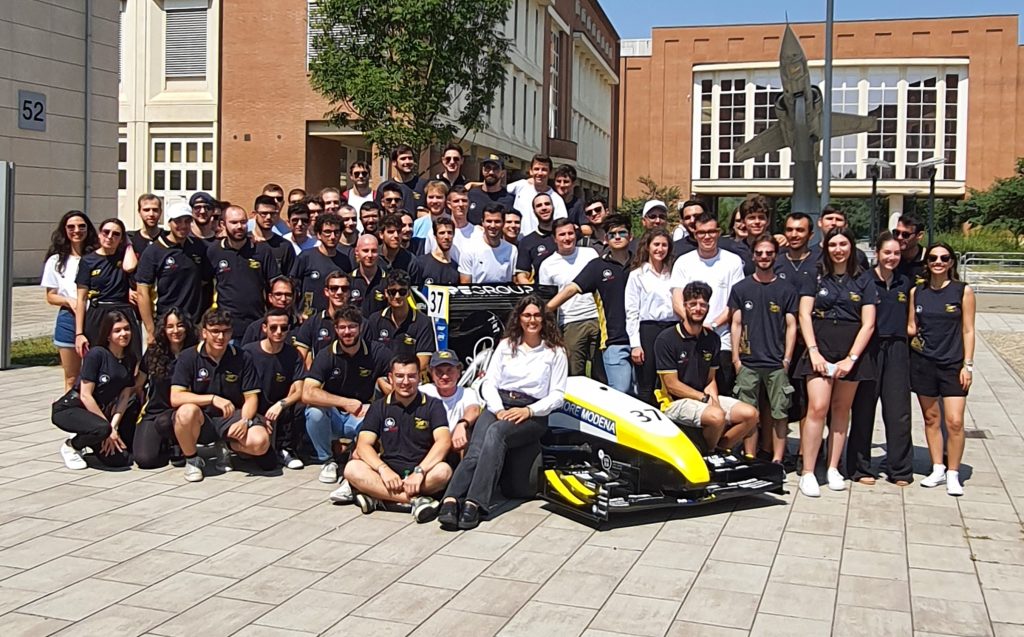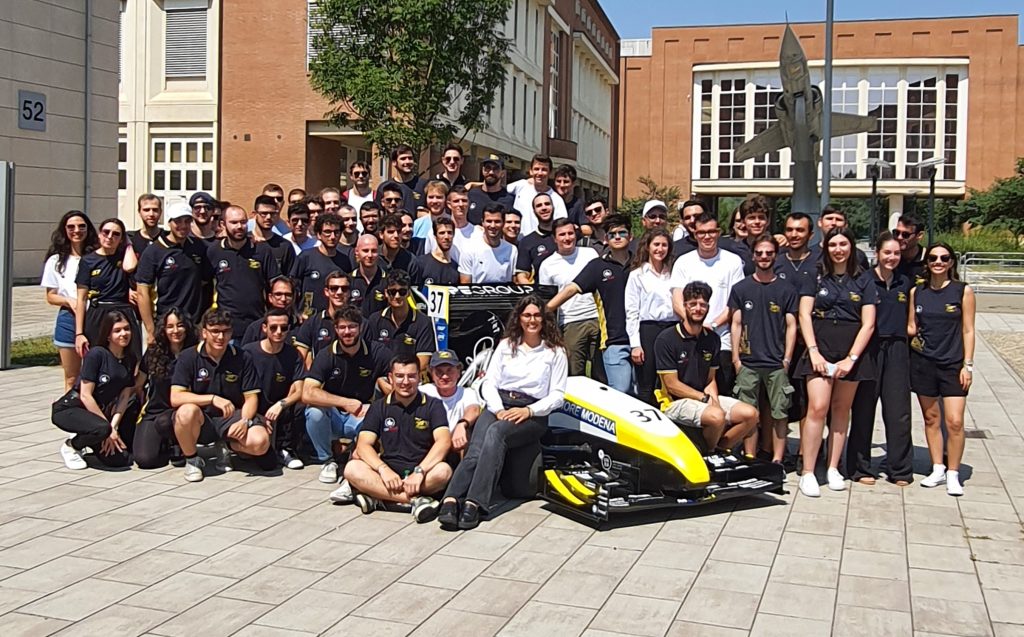Additive manufacturing materials and services provider CRP Technology has played a key role in producing MoRe Modena Racing’s 2024 hybrid race car.
Called the M24-LH, the vehicle was developed through a two-year technical partnership between CRP Technology and the University of Modena and Reggio Emilia team. It features key aerodynamic and structural components 3D printed in CRP’s proprietary Windform materials.
The 3D printing-enabled hybrid race car was victorious at the 2024 Formula Student Austria competition, with MoRe Modena Racing becoming the first Italian team to win this event.
“The support we’ve received from CRP Technology has been crucial in enhancing our vehicle’s performance and developing our skills as future engineers,” commented Beatrice Terzo, Team Leader of MoRe Modena Racing.
She added that collaborating with CRP enabled the team to utilize new advanced materials and manufacturing technologies. This made a “significant difference in our project’s success.”

3D printing enables MoRe Modena Racing success
CRP technology provided its Windform material portfolio and selective laser sintering (SLS) 3D printing services to produce several of the hybrid racing car’s components.
The top cover of the M24-LH’s upper and lower cascade winglet of the front wing was 3D printed using the company’s Windform SL low-density carbon-filled composite. Key to enhancing aerodynamic efficiency, this part increases downforce and reduces drag.
The top and back covers of the front wing’s turning vane optimize the outwash effect of the wing to boost overall racing performance. Windform SL and Windform XT 2.0 materials were used to produce this part.
The latter is a carbon-fiber-reinforced composite SLS possessing 8% higher tensile strength, 22% greater tensile modulus, and a 46% increase in elongation at break over competing offerings. This material was also used to 3D print the rib of the turning vane of the car’s front wing, vital to ensuring structural stability and rigidity.
CRP Technology’s Windform TPU is advertised as a durable polyurethane material possessing rubber-like features. It is reportedly ideal for applications requiring rigid parts that are soft, flexible and elastic, combining high tensile strength with shock absorption and abrasion resistance. MoRe Modena Racing leveraged this material to produce the front, central, and rear connection covers of the race car.
Support components for busbars and windings must be capable of withstanding continuous thermal stress while possessing high mechanical and insulating properties. As such, Windform LX 3.0 was used to produce these critical parts for the M24-LH. This glass fiber-filled material features high-temperature resistance (175.9°C) and offers solid tensile strength and stiffness.
Moving inside the cockpit, the gear-shifting paddles, mounted to the steering wheel, were 3D printed using Windform SL. These components were designed to be lightweight and perfectly fit the driver’s fingers.
According to Franco Cevolini, CEO and Technical Director of CRP Technology, “The collaboration with MoRe Modena Racing is going excellently.” He noted that the partnership advances the company’s commitment to innovation and excellence in motorsport.
“It not only supports the development of cutting-edge solutions but also facilitates the transfer of knowledge and technology between industry and academia,” Cevolini added.

3D printing race cars
Additive manufacturing is being increasingly adopted by motorsport teams looking to edge out their opponents on the track.
MoRe Modena Racing are not the first team to leverage 3D printing services and materials from CRP Technology. Last year, the company’s North American subsidiary, CRP USA, 3D printed racing car parts for the University of Victoria’s UVic Formula SAE Racing team.
The collaboration saw the team produce several integral racing critical components, including the steering wheel and elements of the lubrication system. Carbon fiber-filled composite Windform materials were leveraged to 3D print the parts using CRP’s SLS technology.
Elsewhere, several Formula 1 racing teams have leveraged 3D printing in a bid to move up the grid. Oracle Red Bull Racing’s Head of Quality Engineering, Ian Handscombe, told 3D Printing Industry that the team can’t compete without 3D printing.
He called additive manufacturing the “fastest-growing technology” in Formula 1 and expects more end-use car components to be 3D printed. “I think 3D printing will start to replace mechanical parts on the car soon,” Handscombe added.
Red Bull is not the only F1 team to leverage 3D printing. The competition’s most successful team, Scuderia Ferrari, previously turned to additive manufacturing to improve aerodynamic performance. Notably, during the 2022 season, 3D printed sensor mounts were spotted onboard its F1-75 race cars. These parts were likely to have been made from unfilled or fiber-filled nylon and 3D printed via SLS or MultiJet Fusion (MJF) processes.
Elsewhere, Pat Warner, Advanced Digital Manufacturing Manager at BWT Alpine F1 Team, revealed that the team heavily utilizes additive manufatcring for prototyping. He stated that up to 70% of the bodywork on Alpine’s wind tunnel models is produced using SLA 3D printing.
Want to help select the winners of the 2024 3D Printing Industry Awards? Join the Expert Committee today.
What does the future of 3D printing hold?
What near-term 3D printing trends have been highlighted by industry experts?
Subscribe to the 3D Printing Industry newsletter to keep up to date with the latest 3D printing news.
You can also follow us on Twitter, like our Facebook page, and subscribe to the 3D Printing Industry Youtube channel to access more exclusive content.
Featured image shows the MoRe Modena Racing team with the M24-LH race car. Photo via CRP Technology.
